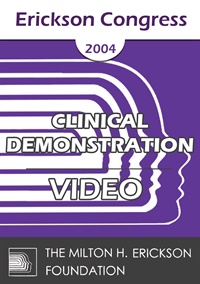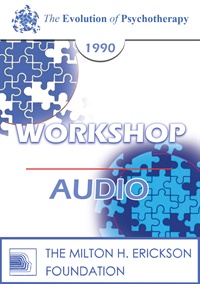
- Average Rating:
- Not yet rated
- Topic Areas:
- Workshops | Ericksonian Hypnosis and Therapy Techniques | Psychotherapy | Tailoring | Utilization | Indirection
- Categories:
- Evolution of Psychotherapy | Evolution of Psychotherapy 1990
- Faculty:
- Jeffrey Zeig, PhD
- Duration:
- 2 Hours 22 Minutes
- Format:
- Audio Only
- Original Program Date:
- Dec 16, 1990
- Short Description:
- Ericksonian approaches use both direct and indirect techniques and tailor methods to the unique characteristics of individual patients. Diagnostic categories can be used to individualize treatment. These tailored techniques are ways of "gift wrapping" ideas so that patients can best actuate effective changes. The concept of "Utilization'' and methods of processing interventions will be discussed. In Ericksonian treatment, dynamic experiences precede dynamic understanding.
- Price:
- $15.00 - Base Price
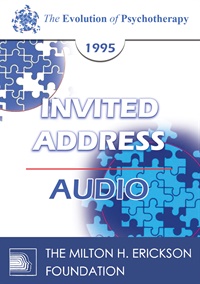
- Average Rating:
- Not yet rated
- Topic Areas:
- Invited Addresses | Ericksonian Hypnosis and Therapy Techniques | History of Psychotherapy | Psychotherapy | Therapist Development
- Categories:
- Evolution of Psychotherapy | Evolution of Psychotherapy 1995
- Faculty:
- Jeffrey Zeig, PhD | Otto Kernberg, MD
- Duration:
- 1 Hour 25 Minutes
- Format:
- Audio Only
- Original Program Date:
- Dec 14, 1995
- Short Description:
- Methods for training therapists customarily are directed to developing cognitive abilities. Using Milton Erickson as a model, an alternate, experiential approach is offered. The "evoking style" of the therapist determines the outcome of the treatment more than the theoretical and clinical methods to which the therapist ascribes.
- Price:
- $15.00 - Base Price
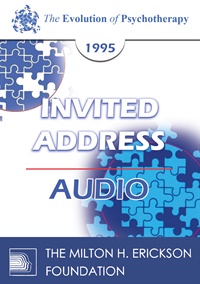
- Average Rating:
- Not yet rated
- Topic Areas:
- Invited Addresses | Ericksonian Hypnosis and Therapy Techniques | History of Psychotherapy | Hypnotherapy | Psychotherapy
- Categories:
- Evolution of Psychotherapy | Evolution of Psychotherapy 1995
- Faculty:
- Ernest Rossi, PhD | Eugene Gendlin, PhD
- Duration:
- 1 Hour 31 Minutes
- Format:
- Audio Only
- Original Program Date:
- Dec 14, 1995
- Short Description:
- The evolution of psychotherapeutic methods over the past 200 years from Mesmer through the psychoanalytic schools, behaviorism and current cognitive psychology tells a fascinating tale of our evolving understanding of human nature. In this address we will trace the development of fundamental techniques such as suggestion, free association, active imagination, gestalt dialogue, focusing, Erickson's indirect approaches and what I now call "The Basic Accessing Question."
- Price:
- $15.00 - Base Price

- Average Rating:
- Not yet rated
- Topic Areas:
- Milton Erickson | Dreamwork | Utilization | Ericksonian Hypnosis and Therapy Techniques | Hypnosis
- Categories:
- Erickson Streaming Video Collection | Erickson Materials | Milton H. Erickson Collections
- Faculty:
- Jeffrey Zeig, PhD | Milton H. Erickson, MD
- Course Levels:
- Master Degree or Higher in Health-Related Field
- Duration:
- 46 minutes
- Format:
- Audio and Video
- Original Program Date:
- Jun 24, 2021
- Short Description:
- Erickson demonstrates his utilization method of entering into the client’s world. He demonstrates his unique approach to working with dreams using a parallel process to stimulate strategic understandings of restrictive family patterns.
- Price:
- $39.95 - Base Price
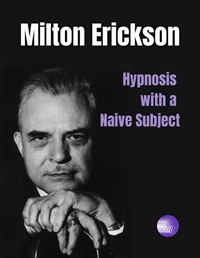
- Average Rating:
- Not yet rated
- Topic Areas:
- Hypnosis | Ericksonian Hypnosis and Therapy Techniques | Milton Erickson | Destabilization
- Categories:
- Erickson Streaming Video Collection | Milton H. Erickson Collections | Erickson Materials
- Faculty:
- Milton H. Erickson, MD | Jeffrey Zeig, PhD
- Course Levels:
- Master Degree or Higher in Health-Related Field
- Duration:
- 1 hour
- Format:
- Audio and Video
- Original Program Date:
- Apr 19, 2021
- Short Description:
- Erickson works hypnotically with a naive subject. He demonstrates the use of arousal state and destabilizing methods. Hypnosis can stimulate resources into play that can promote adaptive living.
- Price:
- $49.95 - Base Price
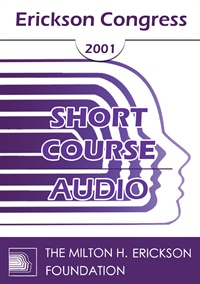
- Average Rating:
- Not yet rated
- Topic Areas:
- Short Courses | Borderline | Ericksonian Hypnosis and Therapy Techniques | Hypnosis | Addiction
- Categories:
- Erickson Congress 2001 | Erickson Congress
- Faculty:
- Ilana Oren, Ph.D., Sc.D., LMFT
- Duration:
- 1:27:05
- Format:
- Audio Only
- Original Program Date:
- Dec 06, 2001
- Short Description:
- IC01 Short Course 07 - The Use of Ericksonian Hypnosis in the Treatment of Borderlines and Addictions - IIana H. Oren, PhD Borderline personality is an underlying character structure, marked by a fragmented sense of identity and maladaptive patterns of perceiving, behaving and relating to others. The Borderline is stuck in "yes, but!" or "I hate you! Don't leave me!" stance. In order to get the habitually oppositional patient to respond, the therapist needs to structure the therapeutic messages in a way that they are not easily recognized on a conscious level. Ericksonian hypnosis paves the way.
- Price:
- $15.00 - Base Price
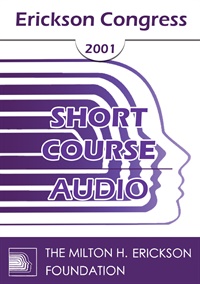
- Average Rating:
- Not yet rated
- Topic Areas:
- Short Courses | Self-Esteem | Couples Therapy | Metaphors | Ericksonian Hypnosis and Therapy Techniques | Relationships
- Categories:
- Erickson Congress 2001 | Erickson Congress
- Faculty:
- Adriana M. Barroso, Dipl. Psych
- Duration:
- 1:24:33
- Format:
- Audio Only
- Original Program Date:
- Dec 06, 2001
- Short Description:
- The various aspects that contribute to low self-esteem in young women having a difficult relationship with their partner are helped with two Ericksonian techniques - - metaphors and symbolization. These aspects include healing emotional wounds, remaining at peace with their partner, learning to love themselves, working with social beliefs, limiting ideas and cultural prejudices and being responsible for their own well-being.
- Price:
- $15.00 - Base Price
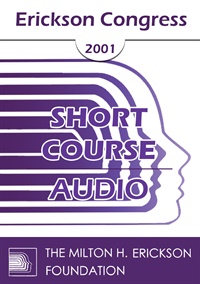
- Average Rating:
- Not yet rated
- Topic Areas:
- Short Courses | Eating Disorders | Ericksonian Hypnosis and Therapy Techniques | Psychology | Habits
- Categories:
- Erickson Congress | Erickson Congress 2001
- Faculty:
- Brian Grodner, PhD
- Duration:
- 1:25:57
- Format:
- Audio Only
- Original Program Date:
- Dec 06, 2001
- Short Description:
- IC01 Short Course 40 - Ericksonian Approaches to Weight Loss and Non-Smoking: Strategies to Enhance the "Psychology of Permanent Habit Control" - Brian Grodner, PhD
- Price:
- $15.00 - Base Price
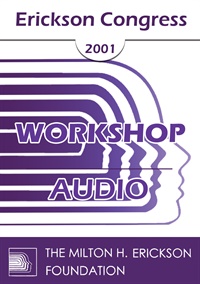
- Average Rating:
- Not yet rated
- Topic Areas:
- Workshops | Ericksonian Hypnosis and Therapy Techniques | Hypnosis | Psychology
- Categories:
- Erickson Congress | Erickson Congress 2001
- Faculty:
- John Edgette, PsyD
- Duration:
- 1:56:22
- Format:
- Audio Only
- Original Program Date:
- Dec 08, 2001
- Short Description:
- IC01 Workshop 33 - Ericksonian Hypnosis and Sport Psychology - John Edgette, PsyD
- Price:
- $15.00 - Base Price
- Average Rating:
- Not yet rated
- Topic Areas:
- Clinical Demonstrations | Ericksonian Hypnosis and Therapy Techniques | Empathy | Experiential Therapy
- Categories:
- Erickson Congress | Erickson Congress 2004
- Faculty:
- Jeffrey Zeig, PhD
- Course Levels:
- Master Degree or Higher in Health-Related Field
- Duration:
- 54:54
- Format:
- Audio and Video
- Original Program Date:
- Dec 03, 2004
- Short Description:
- To list three examples of empathy in Ericksonian therapy. Given a patient, propose an Ericksonian treatment plan.
- Price:
-
Sale is $29.00
price reduced from Base Price - $59.00
Please wait ...


